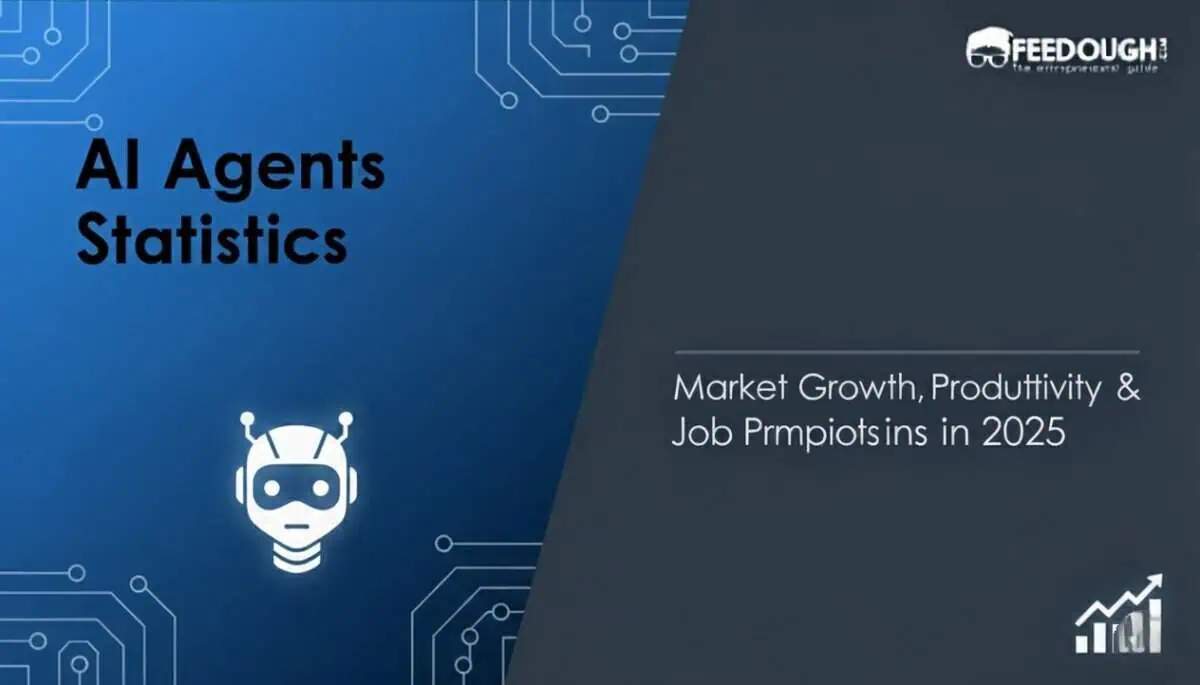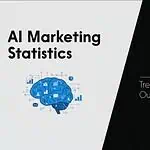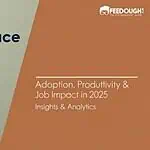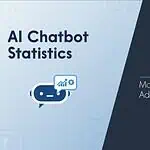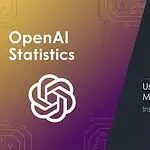While most businesses are still debating whether AI agents are worth the investment, forward-thinking organisations are already seeing remarkable returns.
96% of enterprises are expanding their use of AI agents in 2025, and there’s a clear reason why. 85% of organisations have already integrated AI agents into at least one workflow, experiencing tangible business impact.
We’re talking about 6-10% average revenue increases and up to 37% cost savings in marketing operations alone.
But here’s what you really need to know: the statistics reveal patterns that separate the winners from the laggards. This comprehensive analysis breaks down exactly how businesses are adopting AI agents, what ROI they’re actually achieving, which industries are leading the charge, and what the data predicts for the next 24 months. The insights might surprise you.
Key Statistics at a Glance
Adoption & Enterprise Expansion
- 96% of enterprises are expanding their use of AI agents in 2025
- 85% of organisations have integrated AI agents into at least one workflow
- 79% of employees report their companies are already using AI agents
- 78% of organisations now use AI in at least one function (up from 55% one year earlier)
- 51% of organisations are actively exploring AI agent integration
Financial Impact & ROI
- 6-10% average revenue increase after implementing agentic AI
- 37% cost savings in marketing operations
- $2M in additional revenue generated from routing improvements alone (documented case)
- 3-15% revenue uplift range, depending on implementation quality
Productivity & Efficiency Gains
- 14% productivity boost for customer support agents using generative AI assistants
- 13.8% more customer inquiries handled per hour with AI tools
- 120 seconds saved per customer contact on average
- 60% of customer service teams report significantly improved agent productivity
Customer Service Automation
- 60% of customer inquiries are handled autonomously by AI agents in retail
- 53% of all incoming queries were resolved without human intervention (retail using Freddy AI)
- 45% of IT customer queries deflected away from human agents
Implementation & Control
- 34% of organisations have successfully deployed agentic AI systems that deliver meaningful results
- 51% of enterprises use two or more methods to control and manage AI agent tools
- 42% of enterprises need access to eight or more data sources for successful deployment
- 53% of leadership teams cite security as their top challenge
- 62% of technical practitioners cite security as their top concern
Industry-Specific Investment
- 76% of retail companies are increasing AI agent investment for customer service
- 15-50% of business tasks expected to be automated by AI agents by 2027
Market Size & Growth Projections
- $5.32-5.40 billion current market value (2024-2025)
- $42.7-51.87 billion projected market size by 2030
- 41.50-45.8% compound annual growth rate (CAGR) through 2030
- Healthcare AI agents: $538.51M (2024) → $4.96B (2030)
- Education AI agents: $5.88B → $32.27B (31.2% CAGR)
AI Agents’ Market Growth
The numbers don’t lie: the AI agents market is experiencing explosive growth. But when you look at the research from multiple firms, something interesting happens, the projections are remarkably consistent despite coming from different methodologies.
Here’s what the research tells us:
Current Market Valuation:
- Global AI agents market valued at approximately $5.40 billion in 2024
- By 2030, projections range from $42.7 billion to $51.87 billion
- This represents nearly a 10x increase in just six years
Research Firm Projections:
- MarkNtel Advisors: $5.32 billion (2025) to $42.7 billion (2030) at 41.50% CAGR
- Virtue Market Research: $5.40 billion (current) to $51.87 billion (2030)
- Grand View Research: $50.31 billion by 2030 at 45.8% CAGR
But here’s where it gets really interesting: specific sectors are growing even faster:
Sector-Specific Growth:
- Healthcare AI agents: $538.51 million (2024) to $4.96 billion (2030)
- Education: $5.88 billion to $32.27 billion at 31.2% CAGR
What this means for businesses is pretty straightforward. This isn’t speculative growth, it’s market validation. When multiple research firms independently arrive at similar projections, and when sectors like healthcare and education are seeing rapid adoption, you’re looking at a fundamental shift in how work gets done.

Enterprise Adoption and Deployment Statistics
The shift from AI agent experimentation to actual implementation reveals a telling gap. Here’s what you need to know about the reality behind these numbers.
Adoption Metrics:
- 85% of organisations have integrated AI agents into at least one workflow
- 79% of employees report their companies are using AI agents in some capacity
- 78% of organisations now use AI in at least one function (jumped from 55% one year earlier)
But successful implementation tells a different story:
Implementation Reality:
- Only 34% of organisations have successfully deployed agentic AI systems that deliver meaningful results
- This execution gap highlights the difference between having AI agents and having them work effectively
Control and Governance:
- 51% of enterprises use two or more methods to control and manage their AI agent tools
- These control mechanisms typically include API governance, administrative dashboards, and human review processes
Infrastructure Requirements:
- 42% of enterprises need access to eight or more data sources for successful deployment
- 53% of leadership teams cite security as their top challenge
- 62% of technical practitioners cite security as their top concern
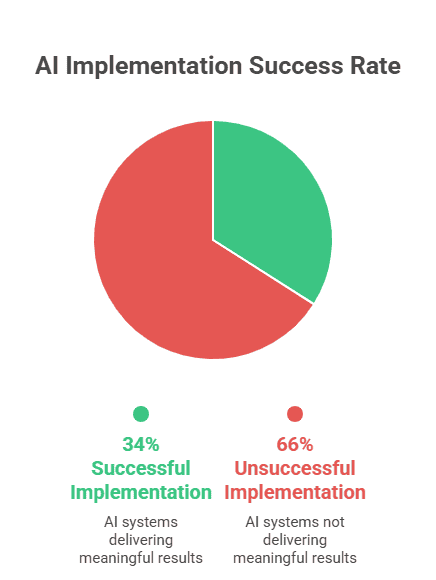
Fortune 500 companies are focusing their efforts on specific areas where they see immediate value – primarily customer support systems and recommendation engines. These applications offer clear ROI metrics and established workflows that AI agents can enhance rather than completely replace.
What becomes evident is that while the enthusiasm for AI agents is widespread, the gap between intention and execution remains significant. Organisations that succeed are those investing in foundational infrastructure and change management alongside the AI technology itself.
AI Agents ROI and Business Performance Metrics
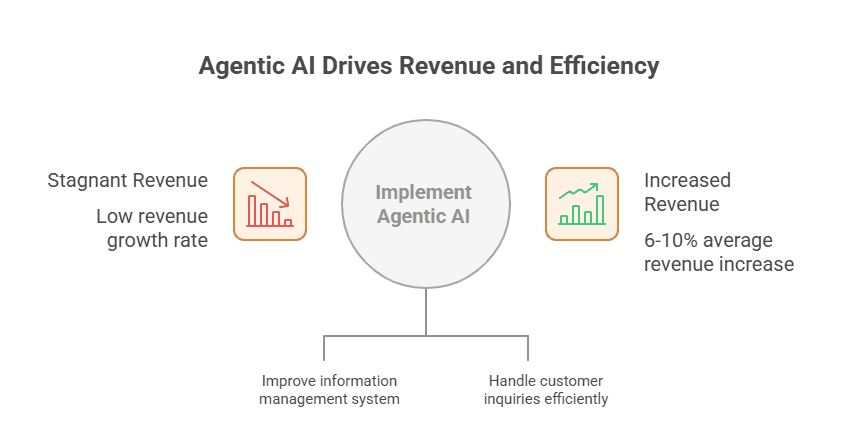
Here’s what you’ll find interesting about AI agents: the numbers don’t lie. While implementation might feel complex, the financial returns are remarkably clear-cut. Let’s look at what companies are actually seeing when they deploy these systems.
Revenue Growth That Actually Moves the Needle
Revenue Impact:
- Average revenue increase of 6% to 10% for companies adopting agentic AI
- Revenue uplift ranges from 3-15% depending on implementation quality
- $2M in additional revenue generated by one company purely through better routing and information management (Google Cloud documented case)
What this means for your bottom line becomes clearer when you see specific examples. That’s the power of AI agents handling the mundane tasks that humans either skip or do inconsistently.
Operational Efficiency Gains
The operational metrics reveal where AI agents really shine:
Customer Support Productivity:
- Support agents using AI tools handle 13.8% more customer inquiries per hour
- 14% productivity boost for customer support agents using generative AI assistants
- Each customer contact saves 120 seconds on average when AI agents handle initial processing and routing
That might seem small, but multiply it across thousands of daily interactions and you’re looking at hours of reclaimed productivity per agent.
Cost Reduction Across Marketing Operations
Marketing Operations Savings: 37% cost savings in marketing operations when AI agents handle lead qualification, content personalisation, and campaign optimisation.
This isn’t about replacing marketers—it’s about eliminating the repetitive tasks that drain their time.
Industry-Specific Performance
Different industries see varying levels of impact:
Query Resolution Rates:
- Retail: AI agents resolve 53% of all incoming queries without human intervention
- IT departments: 45% of customer queries deflected away from human agents
What’s remarkable is how consistent these metrics are across different company sizes and implementation approaches. The ROI appears once AI agents handle high-volume, repetitive tasks that directly impact customer experience or operational efficiency.
Customer Service and Support Statistics
When you dig into real customer service teams, the numbers tell a remarkable story. AI agents in customer service aren’t just handling basic questions – they’re transforming entire support operations from reactive to proactive, allowing human agents to focus on what they do best.
Query Resolution Breakthrough
Autonomous Query Handling:
- AI agents handle 60% of customer inquiries autonomously in retail environments
- Retail companies using Freddy AI Agent report 53% of all incoming queries resolved without human intervention
- IT companies see 45% of customer queries deflected away from human agents
The pattern is clear: AI agents excel at handling routine inquiries, password resets, and status updates, while humans tackle relationship-building and complex technical issues.

Agent Productivity Transformation
Here’s where things get personal for support teams:
Productivity Metrics:
- 60% of customer service teams using AI copilots report significantly improved agent productivity
- Support agents using generative AI assistants see a 14% productivity boost
- Agents handle 13.8% more customer inquiries per hour
You might think that’s just about speed, but it’s more nuanced. These tools help agents find information faster, suggest better responses, and automate follow-up tasks.
Industry-Specific Impact
Investment Confidence: 76% of retail companies are increasing AI agent investment specifically for customer service enhancement
Retail’s high-volume, repetitive nature makes it perfect for AI augmentation. What you’re seeing across industries is AI agents creating breathing room for human creativity. Instead of rushing through tickets, agents can build genuine customer relationships and tackle complex challenges that actually need human insight.
Future AI Agent Predictions and Market Forecasts
The next three years will mark a turning point for business automation. We’re looking at a fundamental shift that’s happening faster than most leaders anticipated.
Automation Forecast:
- 15% to 50% of business tasks are expected to be automated by AI agents by 2027
- AI agents market projected to grow at 41.50% CAGR through 2030
- The market will reach between $42.7 and $51.87 billion by 2030
But here’s what’s really interesting – certain sectors are accelerating even faster than the overall market:
High-Growth Sectors:
- Healthcare AI agents: $538.51 million (2024) to $4.96 billion (2030)
- Education: $5.88 billion to $32.27 billion at a 31.2% annual growth rate
What this means for you is that early movers in these sectors have a significant advantage window that’s rapidly closing.
Your infrastructure requirements will become more sophisticated over the next 24 months. The businesses that succeed won’t be those with the most AI agents – they’ll be the ones with the best integration capabilities. Security and governance frameworks are maturing fast, which means compliance requirements will tighten considerably.
You’ll also see new job roles emerging around AI agent management, training, and optimisation. The companies planning for this workforce transition now are positioning themselves to capture the biggest share of the productivity gains ahead. The window for strategic positioning is narrower than most realise.
A startup consultant, digital marketer, traveller, and philomath. Aashish has worked with over 20 startups and successfully helped them ideate, raise money, and succeed. When not working, he can be found hiking, camping, and stargazing.
